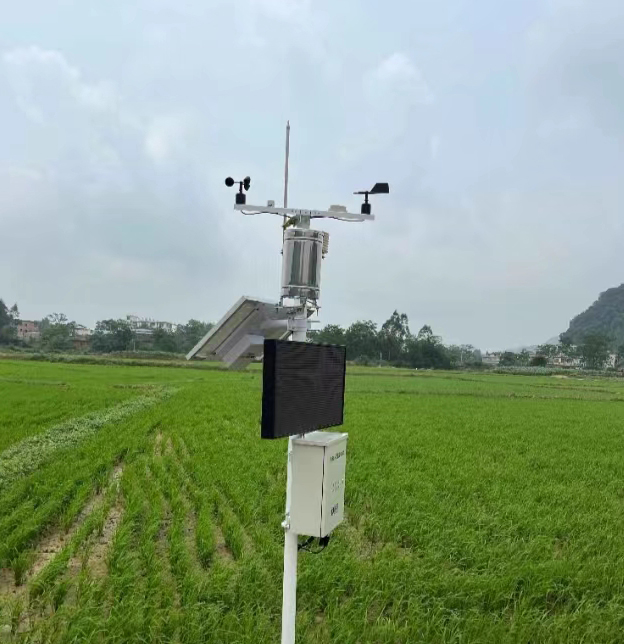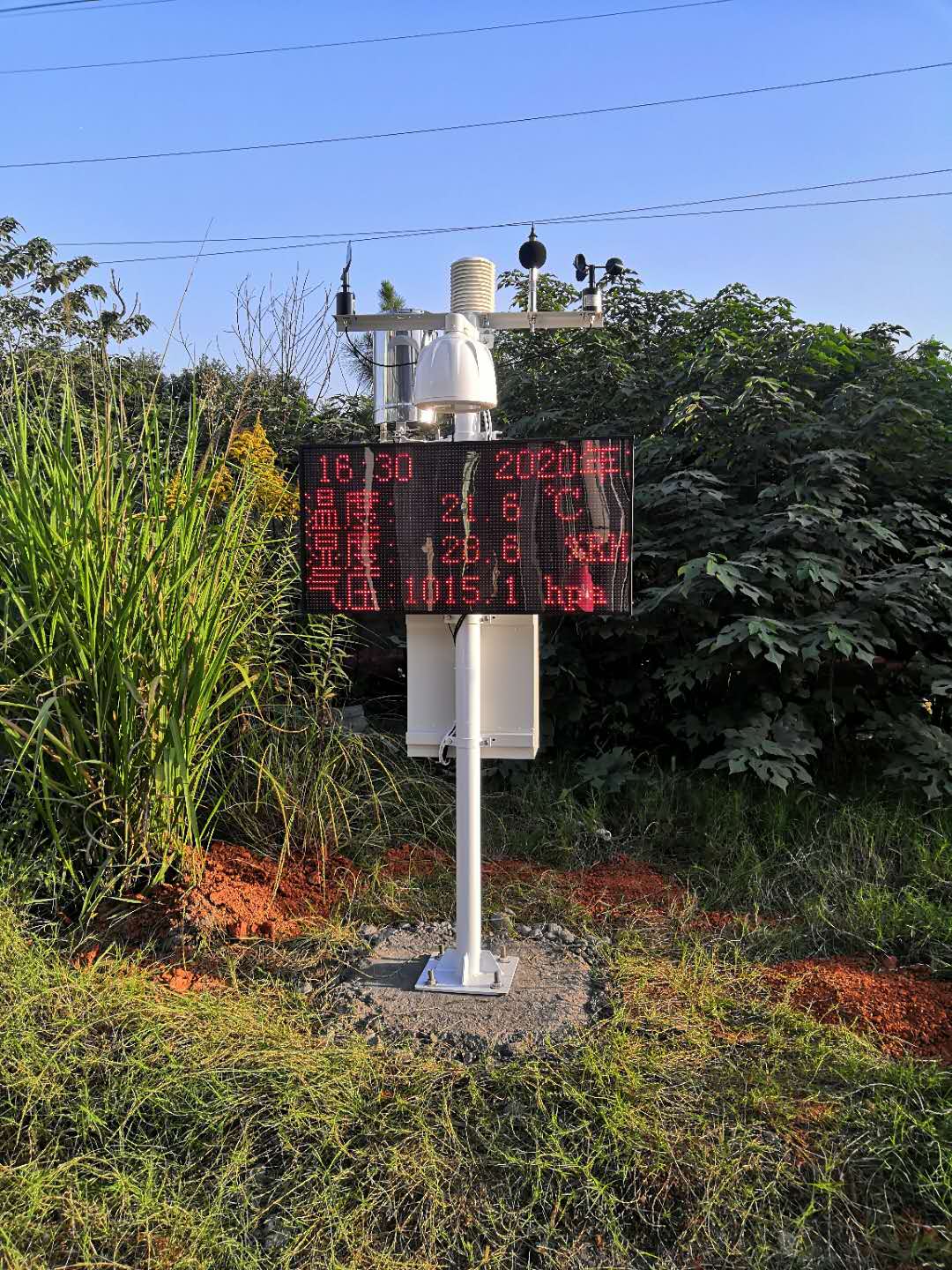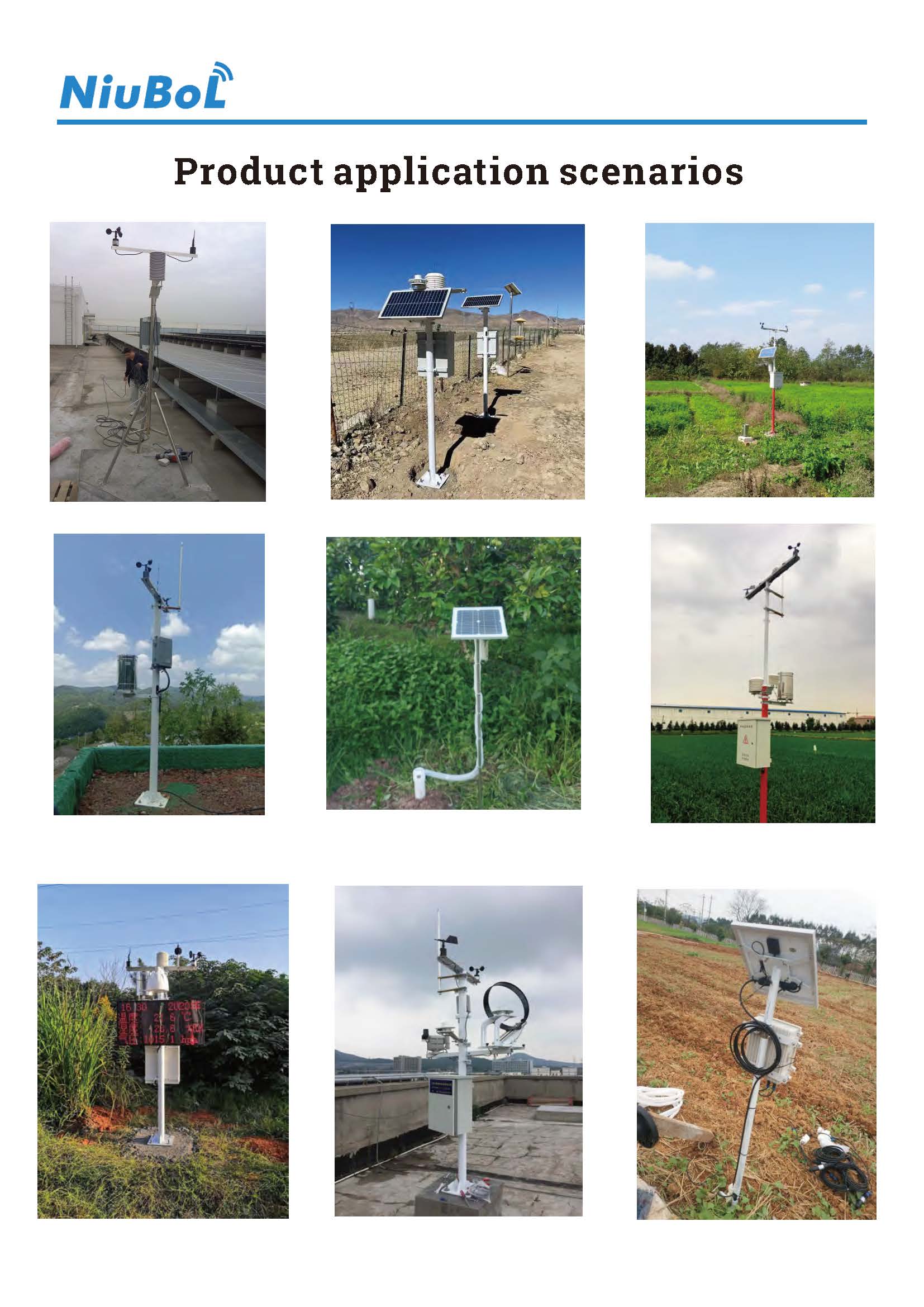

— Products —
 Consumer hotline +8618073152920
Consumer hotline +8618073152920 WhatsApp:+8615367865107
Address:Room 102, District D, Houhu Industrial Park, Yuelu District, Changsha City, Hunan Province, China
All products
weather station is a system used for real-time monitoring of meteorological data and environmental data, while an MQTT weather station is a weather station that adopts the MQTT protocol for data transmission.With the advantages of real-time data transmission, high-efficiency data processing, low-power consumption, and wide applicability, the MQTT weather station has a wide range of applications in the fields of agricultural production, environmental monitoring, transportation···
Tel/WhatsApp:+8615367865107
Email:Arvin@niubol.com +Nearly 100 partner company in more than 68 countries. We are committed to providing high-quality, practical products to meet your needs and help you solve problems.Product Details
A weather station is a system for real-time monitoring of meteorological and environmental data. It is capable of collecting information on a variety of meteorological elements, including ambient temperature, humidity, dew point temperature, wind direction, wind speed, precipitation, barometric pressure, solar radiation, etc. It provides important data support for meteorological forecasting, agricultural production, environmental protection, transport and other fields. According to the usage, installation and accuracy, the weather station can be divided into various types such as portable weather station, high-precision weather station, highway weather station, forest fire risk weather station, campus weather station, electric power weather station, photovoltaic weather station, scenic weather station, community weather station, and so on.
MQTT weather station refers to the weather station that adopts MQTT (Message Queuing Telemetry Transport) protocol for data transmission.MQTT is a lightweight open communication protocol widely used in the field of Internet of Things (IoT). Through the MQTT protocol, the weather station can publish the collected weather data to the MQTT proxy server in real time, and the related systems or platforms can subscribe to these data to realise real-time data acquisition and processing.MQTT weather station has the advantages of high data transmission efficiency, low power consumption, high reliability, and is especially suitable for scenarios that require remote monitoring and data transmission.

- Fixed weather station: deployed in airports, weather stations, scientific research institutions and other fields for a long time, providing stable and continuous weather data.
- Portable weather station: used for temporary observation or detailed meteorological investigation in specific areas, such as field trips and disaster site assessment.
- Unattended Automatic Weather Station: Automatically record meteorological data through remote communication equipment, suitable for remote or difficult to manually access areas.

The role and value of MQTT weather station are mainly reflected in the following aspects:
1. Real-time data transmission: Through MQTT protocol, the weather station can transmit the collected weather data to the data centre or related platform in real time to ensure the timeliness and accuracy of the data.
2. Efficient data processing: MQTT protocol supports efficient transmission and processing of large-scale data, which can meet the requirements of weather stations for data transmission speed and stability.
3. Reduced energy consumption: MQTT protocol has low-power characteristics, which helps reduce the operating cost and maintenance cost of weather stations.
4. Wide applicability: MQTT weather station can be used in a variety of scenarios, including agricultural production, environmental monitoring, transport, military, hydrology and other fields, providing data support for decision-making in various industries.
MQTT weather station has a wide range of application scenarios, mainly including the following aspects:
1. Agricultural production: In agricultural production, MQTT weather station can monitor the meteorological conditions of farmland in real time and provide farmers with accurate planting suggestions and management decisions. For example, by monitoring soil moisture and rainfall, farmers can rationally arrange irrigation schedules and improve the utilisation of water resources.
2. Environmental monitoring: In the field of environmental monitoring, MQTT weather station can monitor air quality, water quality and other environmental parameters in real time, providing data support for environmental protection departments. For example, by monitoring the concentration of PM2.5 in the air, the air quality condition can be assessed and corresponding management measures can be taken.
3. Transportation: In the field of transportation, MQTT weather stations can monitor the meteorological conditions of roads in real time and provide early warning information for traffic management departments. For example, in bad weather conditions, the weather station can warn in advance of road icing, snow accumulation, etc., to help traffic management departments take countermeasures to ensure traffic safety.
4. Military applications: In the military field, MQTT weather station can monitor the meteorological conditions of the battlefield in real time to provide decision support for the commanders. For example, by monitoring parameters such as wind direction and wind speed, it can assess the impact of the battlefield environment on the effectiveness of weapons and provide a basis for commanders to formulate operational plans.
5. Smart City: In the construction of smart city, MQTT weather station can be used as an important part of the smart city to provide meteorological data support for city managers. For example, by monitoring the meteorological conditions of the city in real time, it can optimise the allocation of urban resources and improve the efficiency of urban management.
6. Weather forecasting and climate research:
- The provision of real-time meteorological data is the basis of weather forecasting and helps meteorologists to predict weather trends, including information on temperature, rainfall, snowfall and wind direction.
- Long-term monitoring data supports climate research to understand climate characteristics and change patterns, providing scientific basis for environmental protection, urban planning, energy development and other fields.

MQTT (Message Queuing Telemetry Transport) is a messaging protocol under the ISO standard, designed for communication with a large number of remote sensors and control devices that have limited computing power and work in low-bandwidth, unreliable networks. It works on the TCP/IP protocol family and uses a publish/subscribe model for messaging. the MQTT protocol has the following key features:
1. Lightweight: the MQTT protocol is designed to be very simple and lightweight, which makes it very suitable for resource-constrained devices such as sensors, smart appliances, etc.
2. Open and easy to implement: The MQTT protocol is open and any organisation or individual can use it for free, and its implementation is relatively simple and easy to integrate into various systems.
3. Support multiple message quality of service: MQTT protocol provides three different message quality of service (QoS) to meet the needs of different application scenarios. QoS 0 means at most one delivery, QoS 1 means at least one delivery, QoS 2 means only one delivery.
4. Based on publish/subscribe model: MQTT protocol uses publish/subscribe model for messaging. This model achieves decoupling of messages, so that message publishers and subscribers do not need to communicate directly, but through the MQTT proxy server for message relay and distribution.
5. Low overhead and low bandwidth usage: The MQTT protocol has very low transmission overhead and bandwidth usage, which makes it ideal for use in environments with limited bandwidth or poor network conditions.
MQTT protocol has a wide range of applications in the field of IoT, such as smart home, smart agriculture, industrial automation and so on. Through the MQTT protocol, various IoT devices can be interconnected and work together to build an efficient and intelligent IoT ecosystem.

Summary
A weather station is a system used for real-time monitoring of meteorological data and environmental data, while an MQTT weather station is a weather station that adopts the MQTT protocol for data transmission.With the advantages of real-time data transmission, high-efficiency data processing, low-power consumption, and wide applicability, the MQTT weather station has a wide range of applications in the fields of agricultural production, environmental monitoring, transportation, military applications, and smart cities. Through real-time monitoring and transmission of weather data, MQTT weather station provides important data support for decision-making in various industries.
Sensors & Weather Stations Catalog
Agriculture Sensors and Weather Stations Catalog-NiuBoL.pdf
Weather Stations Catalog-NiuBoL.pdf
Related recommendations
 Multi-Depth Soil Sensor RS485
Multi-Depth Soil Sensor RS485 TDR Soil Moisture Sensor
TDR Soil Moisture Sensor Pyranometer Solar Radiation Sensors
Pyranometer Solar Radiation Sensors Soil ph sensor
Soil ph sensor Tipping Bucket Rain Gauge
Tipping Bucket Rain Gauge Air Temperature and Humidity Sensor
Air Temperature and Humidity Sensor
Screenshot, WhatsApp to identify the QR code
WhatsApp number:+8615367865107
(Click on WhatsApp to copy and add friends)
